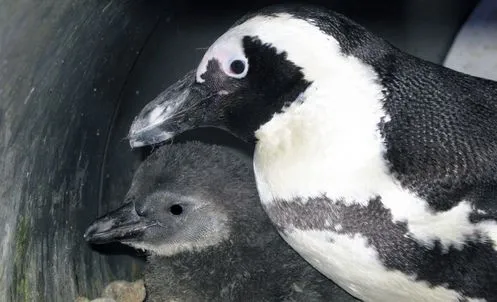The African penguin Spheniscus demersus catches the eye of visitors to the Eye of the Climate exhibition. This curious and mischievous penguin, with a slightly clumsy walk on land becomes agile and fast once in the water.
The star of the group is called Opale. She is lively and curious and easily approaches visitors, making almost immediate contact.
